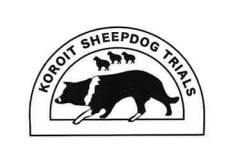The start of 2020 has been pretty eventful. Apart from bushfires, hail storms, dust clouds (and the Australian Open!), our news feeds have also been full of stories about a new coronavirus infecting people. Declared a global health emergency this morning, the virus (officially called “2019-nCoV” and unofficially called “Wuhan”) has infected almost 10,000 people and killed more than 200. Countries across the world are trying to contain its spread (this link is a great summary of all the terminology that’s used to describe disease outbreaks).
So we thought we’d take the opportunity to talk about bovine Coronavirus (aka BCoV)
What are coronaviruses?
Coronaviruses generally cause respiratory and gastrointestinal disease in humans and animals, such as cats, dogs, pigs, cows, chickens, turkeys, rabbits, rodents and wildlife. Their surface is covered with little spikes that look like a crown under the microscope. They can mutate quickly and cross between different species of animals (including humans).
There are 4 different coronavirus strains that commonly affect people, probably causing about 10-30% of what we call the common cold. However sometimes, like with this new virus, the disease caused by coronaviruses can be nasty! Severe Acute Respiratory Syndrome (SARS) is a coronavirus that killed 774 out of 8000 infected people in 2002: it is thought to have initially come from bats (via civet cats) before being spread from person to person. Middle East Respiratory Syndrome (MERS) killed 858/2500 people in 2012. Again, it is thought to have originated from bats, but this time spreading to people via camels.

What disease does bovine coronavirus cause?
Bovine coronavirus causes diarrhea in young calves. The virus infects and destroys the cells lining the small and large intestine. This damage reduces fluid absorption and so it comes out the back end as scours. Bovine coronavirus can also cause respiratory signs such as coughing, a runny nose and pneumonia in calves 2 to 24 months old. The virus has also been reported to cause haemorrhagic diarrhoea in adult cows.
Disease is spread by the faecal-oral route and via aerosols from the respiratory tract. The virus can survive cold weather, but is sensitive to detergents, disinfectants and heat.
How common is bovine coronavirus?
Bovine coronavirus is diagnosed by testing faecal samples from affected animals (we either test in-house or send samples away to the lab). In an Australian-wide survey of 600 sick calves across 84 farms, coronavirus was found in 22% of faecal samples. In our district, we rarely see it as a cause of severe scours in calves: Salmonella, Rotavirus and Cryptosporidium are by far the more common causes when we’re investigating calf disease.
Can bovine coronavirus infect people?
The new Wuhan virus, like SARS and MERS, is thought to have originated from exposure to infected bats and/or snakes (before spreading from person to person). So, what about bovine coronavirus, is it going to be the next plague?
Well – there’s thoughts that perhaps it has already been one! Virus scientists analyse the genes of viruses to create “family trees” (see image below). One of the existing human coronaviruses (HCoV-OC43) has a very similar genetic make-up to BCoV. It is speculated to have crossed the species barrier from cows to humans back in the late 1800s.
So the risk to us from calves is probably pretty minor, but the approach to minimising any risk is the same as for other zoonotic diseases (like Salmonella and Cryptosporidium). Always wear gloves when handling calves and wash hands well afterwards and prior to eating. Don’t wear “calf-shed clothes” into the house and ensure the young, old or immunocompromised stay away from sick calves.
 How can we prevent bovine coronavirus?
How can we prevent bovine coronavirus?
There are vaccines available to prevent coronavirus disease in young calves, such as Scourshield. This is a colostral vaccine, which means dams are vaccinated prior to calving so that they concentrate the antibodies into their colostrum. Calves still need to be fed first-milking colostrum quickly, to give the antibodies within the colostrum the best chance to cross the intestinal wall into the blood stream. As well as coronavirus, Scourshield also protects against E. coli and Rotavirus. As with all vaccinations, it’s important to follow the label directions:
- Animals being vaccinated for the first time need two injections, 3-9 weeks apart, followed by a yearly booster
- The second injection/booster should be given 2-6 weeks prior to calving
- A 2ml dose is given in the muscle or under the skin
- Vaccine can be used up to 9 weeks after opening the bottle (if stored appropriately)































